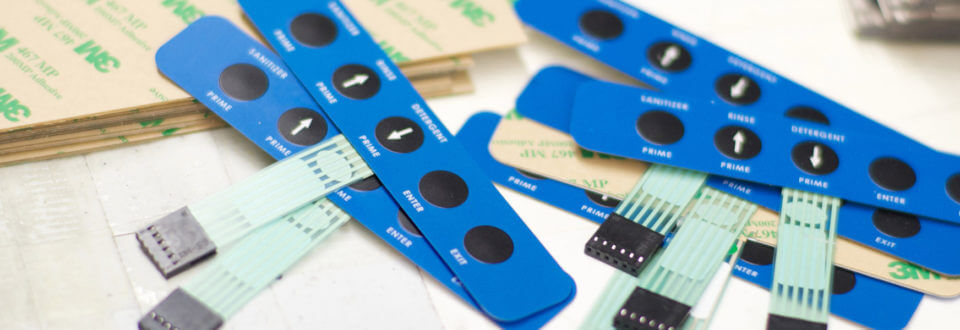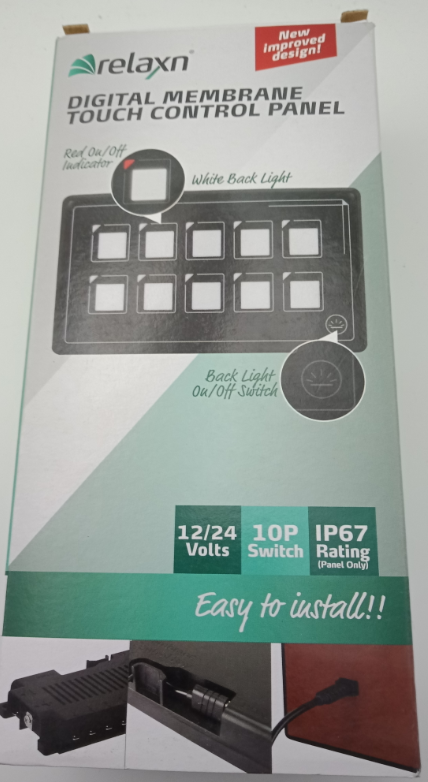The Role of Membrane Switch Technology in Improving Product Interfaces
The Role of Membrane Switch Technology in Improving Product Interfaces
Blog Article
The Advantages of Utilizing Membrane Switches Over in Consumer Electronic Devices
Membrane buttons are significantly recognized for their significant advantages in consumer electronic devices, specifically in boosting user interaction and improving manufacturing procedures. The convenience in layout allows for tailored solutions that meet diverse consumer needs.
Improved Individual Experience
In today's competitive landscape of customer electronic devices, improved user experience is paramount; nearly 85% of customers focus on intuitive user interfaces. Membrane layer changes play an important role in attaining this degree of usability.
The tactile responses offered by membrane layer switches is crucial for directing user activities, guaranteeing that commands are registered properly. This comments device reduces mistakes and increases user satisfaction, promoting a positive connection between the customer and the device. In addition, the adjustable nature of membrane layer changes enables manufacturers to tailor interfaces to certain individual needs, making devices more available and welcoming.
Additionally, membrane layer buttons can incorporate backlighting and visuals overlays, additionally enhancing visibility and usability in diverse atmospheres. This adaptability makes sure that devices continue to be easy to use and practical, no matter the setting. On the whole, the assimilation of membrane changes right into customer electronic devices dramatically boosts customer experience, driving brand name loyalty and complete satisfaction in a significantly open market.
Economical Production
Customer electronics makers are frequently seeking ways to balance high quality with affordability, and membrane buttons supply a compelling remedy for affordable production. membrane switch. These components are inherently less complex than typical mechanical buttons, which decreases both production prices and complexity. The light-weight layout of membrane layer changes permits lower shipping expenses and simpler combination into portable tools, additionally enhancing their charm in an open market

Manufacturers can produce membrane layer switches in high quantities, benefiting from economic situations of scale. This mass production ability ensures consistent top quality while considerably decreasing per-unit costs. Furthermore, the materials used in membrane buttons, such as polyester and polycarbonate, are frequently less costly than those required for traditional switch modern technologies, adding to overall cost savings.
The production procedure for membrane switches usually calls for less actions and much less labor compared to various other switch kinds. This streamlined technique not just reduces labor costs yet also speeds up time-to-market, allowing companies to react quickly to customer demand. As a result, the combination of minimized product expenses and efficient manufacturing processes settings membrane changes as a clever investment for suppliers intending to supply top quality customer electronics at competitive rate points.
Design Versatility and Modification
While traditional mechanical buttons frequently impose limitations on design as a result of their bulk and called for mounting mechanisms, membrane switches supply unrivaled versatility and personalization options for consumer electronics. This ingenious technology enables designers to produce smooth, low-profile user interfaces that can seamlessly incorporate into various item appearances, from mobile phones to cooking area appliances.
Membrane layer buttons can be generated in basically any type of shape or size, enabling suppliers to tailor the layout to specific ergonomic and practical demands. This versatility not only boosts individual experience yet likewise permits creative designs that line up with brand name identity. The use of published graphics on membrane switches uses the chance for dynamic colors and detailed designs, which can be quickly customized without substantial expense implications.
In addition, membrane layer buttons can include multiple capabilities into a solitary layer, minimizing the requirement for multiple parts and simplifying assembly procedures. This streamlined design method minimizes webpage room and weight, making it suitable for portable customer electronics. In general, the design versatility and customization capabilities of membrane layer switches empower makers to innovate, ultimately resulting in more interesting and easy to use products.
Longevity and Integrity
As innovation proceeds to progress, the sturdiness and dependability of membrane layer buttons have actually come to be essential considerations for makers in the consumer electronics industry. Membrane layer buttons are designed to stand up to extreme ecological conditions, including temperature level fluctuations, dampness, and dirt direct exposure. Their durable construction commonly includes multi-layered materials that supply an efficient barrier against impurities, making certain long life and constant performance.
Along with environmental resistance, membrane layer switches over offer premium mechanical reliability. Unlike traditional mechanical switches, which may break with time, membrane switches over make use of a closed layout that reduces the redirected here risk of mechanical failing. The lack of moving components not only improves their life expectancy but additionally minimizes damage, making them ideal for high-usage applications.
Moreover, membrane layer switches can sustain a considerable variety of actuations without loss of functionality, commonly surpassing numerous cycles (membrane switch). This toughness translates to decrease substitute prices and minimized downtime for consumers and producers alike. On the whole, the mix of ecological strength and mechanical reliability makes membrane changes a calculated option for consumer electronics, ensuring that gadgets stay operational and effective throughout their designated life-span

Streamlined Product Growth
The resilience and integrity of membrane changes significantly contribute to structured product growth in the customer electronics industry. By incorporating these switches early in the design procedure, producers can lower the intricacy and variety of components required in their items. Membrane layer buttons are small and lightweight, permitting much more efficient area utilization within gadgets, which can result in streamlined assembly processes.

The simplicity of producing membrane buttons additionally plays an essential function in item advancement. With modern-day printing techniques and materials, manufacturing can be scaled successfully, decreasing lead times and minimizing waste. This causes lower production expenses, boosting total earnings.

Final Thought
In final thought, membrane layer changes substantially improve customer electronic devices by offering a boosted individual experience, cost-effective manufacturing procedures, and functional design choices. The combination of membrane layer changes stands for a critical option for suppliers seeking to maximize item layout and performance.
Membrane buttons are progressively recognized for their significant advantages in customer electronics, specifically check in boosting customer communication and streamlining production procedures. In addition, the materials utilized in membrane buttons, such as polyester and polycarbonate, are often much less expensive than those needed for traditional switch modern technologies, contributing to total cost financial savings.
The manufacturing process for membrane layer changes commonly requires less steps and less labor contrasted to other switch types. Unlike standard mechanical buttons, which might put on out over time, membrane switches make use of a sealed layout that minimizes the risk of mechanical failure.In verdict, membrane switches significantly boost consumer electronics by giving an enhanced individual experience, affordable production procedures, and versatile design choices.
Report this page